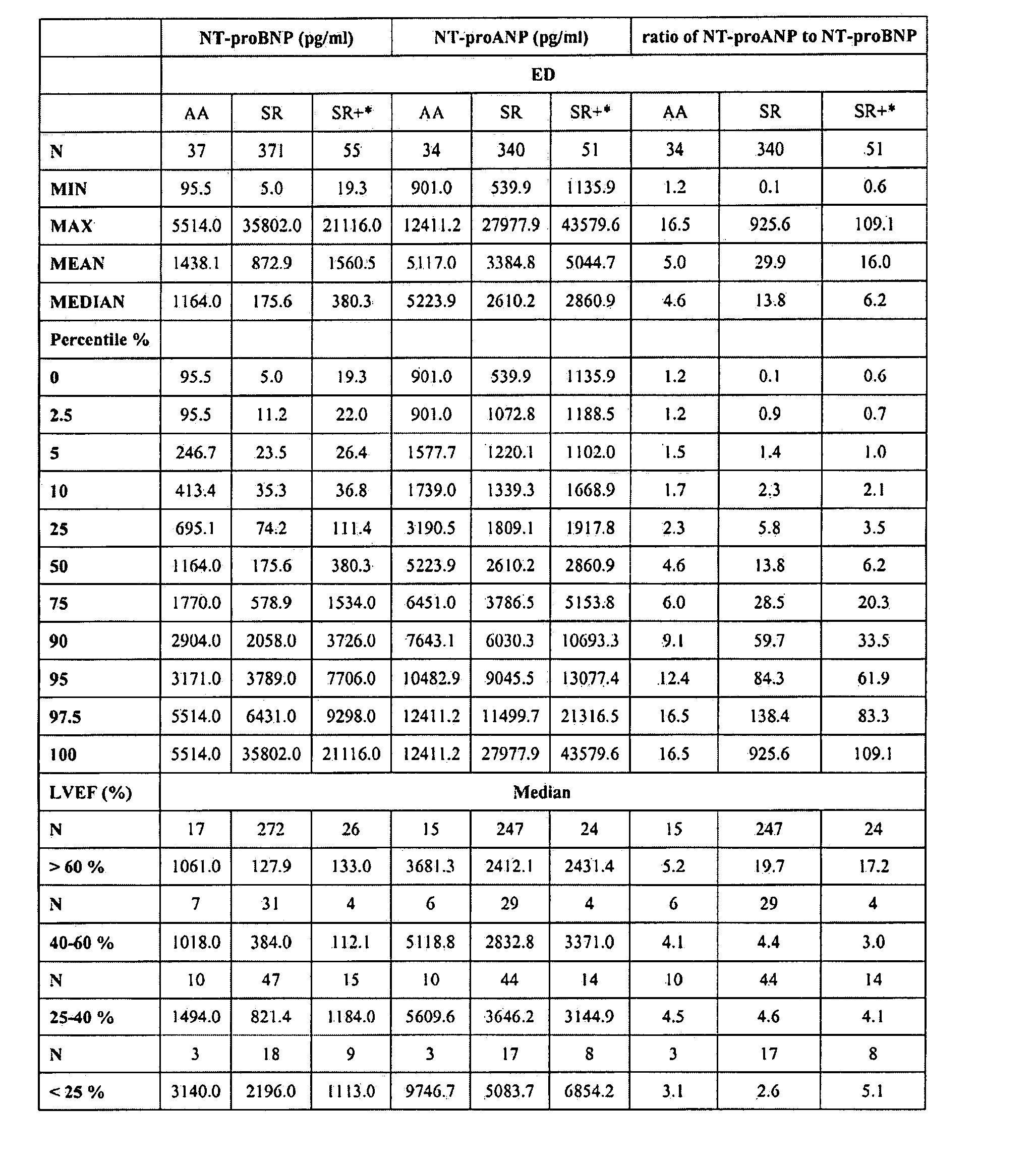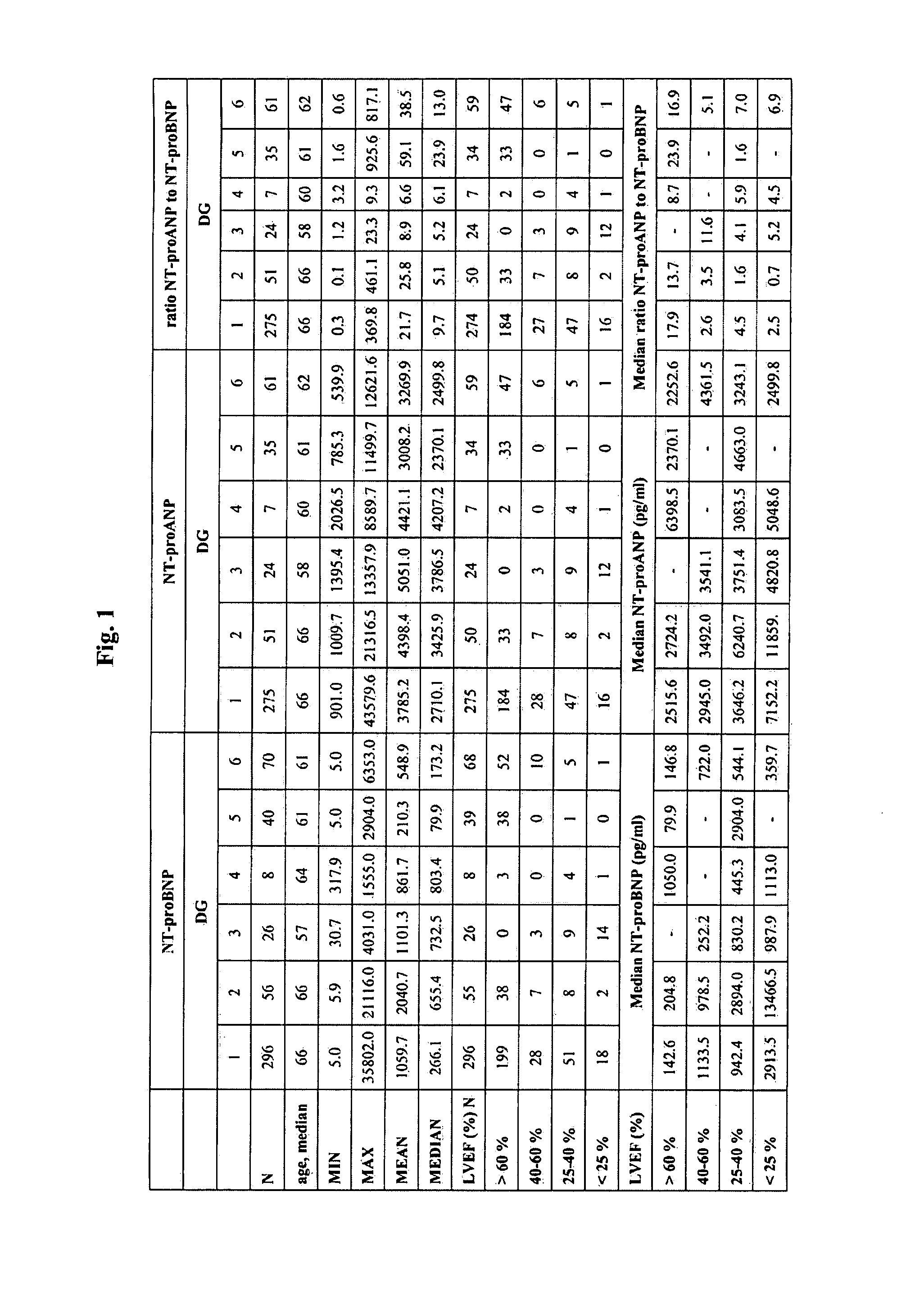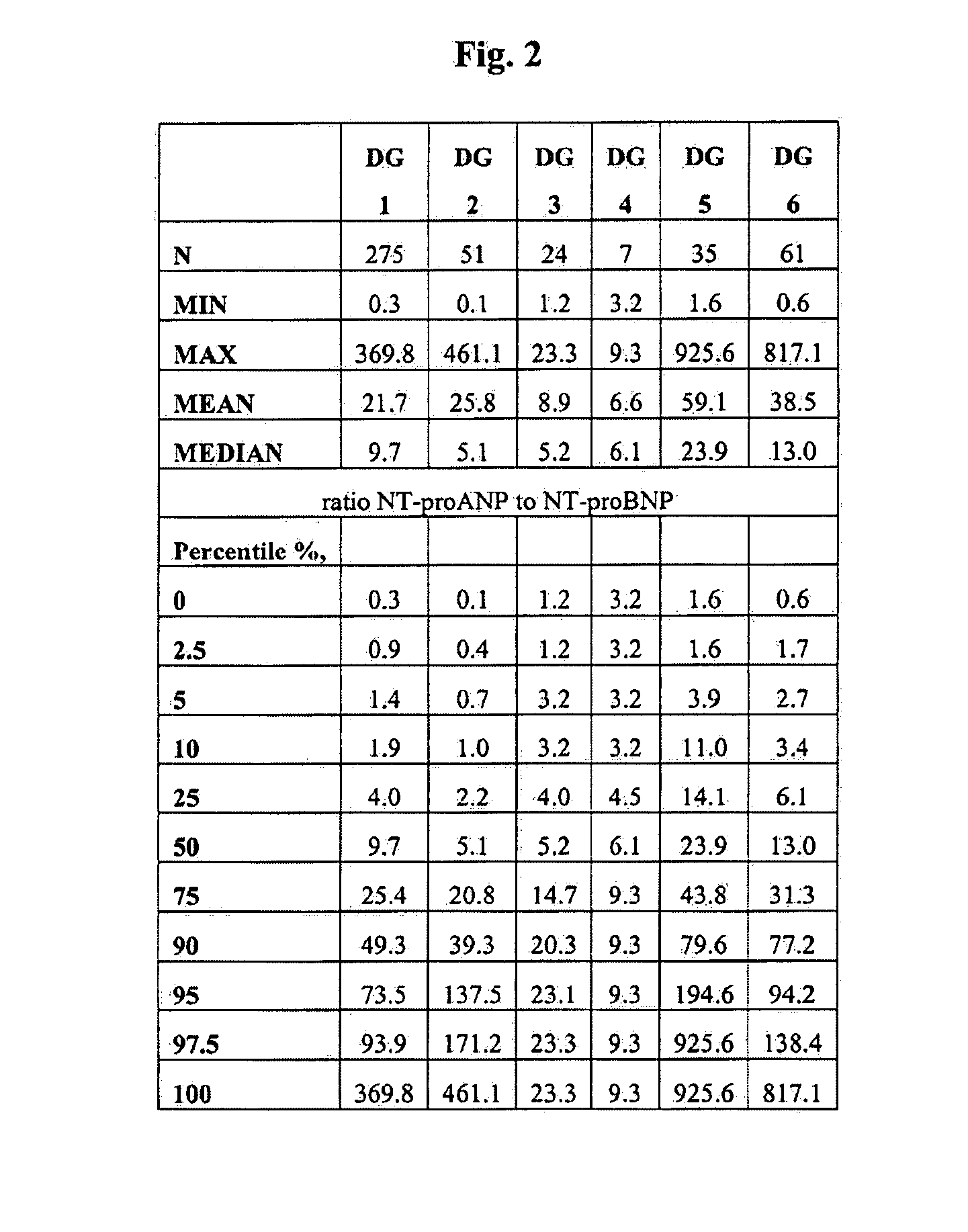Natriuretic peptide ratio for diagnosing cardiac dysfunctions
a technology of natriuretic peptides and cardiac dysfunction, which is applied in the direction of instruments, biological material analysis, biochemistry apparatus and processes, etc., can solve the problems of heart failure, fatigue and exhaustion of patients, and systolic dysfunctions are usually symptomatic, so as to improve diagnostic information and affect the level of anp-type peptides
- Summary
- Abstract
- Description
- Claims
- Application Information
AI Technical Summary
Benefits of technology
Problems solved by technology
Method used
Image
Examples
specific embodiments
Example 1
Measurement of NT-proBNP
[0128]NT-proBNP can be determined by an electrochemiluminescence immunoassay (ELECSYS proBNP sandwich immunoassay; Roche Diagnostics, Mannheim, Germany) on ELECSYS 2010. The assay works according to the electrochemiluminescence sandwich immunoassay principle. In a first step, the biotin-labeled IgG (1-21) capture antibody, the ruthenium-labeled F(ab′)2 (39-50) signal antibody and 20 microliters of sample are incubated at 37 C for 9 minutes. Afterwards, streptavidin-coated magnetic microparticles are added and the mixture is incubated for additional 9 minutes. After the second incubation, the reaction mixture is transferred to the measuring cell of the system where the beats are magnetically captured onto the surface of an electrode. Unbound label is removed by washing the measuring cell with buffer.
[0129]In the last step, voltage is applied to the electrode in the presence of a tri-propylamine containing buffer and the resulting electrochemiluminesce...
example 2
[0132]A total of 542 (315 male, 227 female) elderly (more than 65 year-old) patients which had mild symptoms of breathing difficulties were included in a study related to the prognostic value of NT-proBNP). The median age was 63±11 years. In 454 patients of this group the levels of NT-proBNP and NT-proANP was measured. All patients received a clinical investigation, electrocardiogram, and an echocardiogram. Diastolic dysfunction was estimated by analyzing the ratio of E-wave to A-wave as described in (Aurigemma and Gaasch (2004), cited above). A systolic dysfunction was diagnosed-if an LVEF of less than 50% was measured. Patients without impaired systolic function were grouped according to the degree of the diastolic dysfunction as estimated according to the ratio of E-wave to A-wave (Aurigemma and Gaasch (2004), cited above).
TABLE 1Plasma levels of natriuretic peptides in certain conditionsratio ofNT-proANP(pg / ml) toNT-proBNPNT-proANPNT-proBNPDysfunction(pg / ml)(pg / ml)(pg / ml)Nno DD1...
example 3
[0134]In a sequential study, the study subjects received the following examinations: (1) coronary angiography for diagnosing coronary heart disease, (2) echocardiography, particularly for assessing and estimating a systolic dysfunction, electrocardiogram for assessing the existence of previous infarction, arrhythmias, or any other information.
[0135]The patients were grouped according to the underlying disease, and the levels of NT-proBNP and NT-proANP were measured.[0136]Group 1: All subjects with coronary heart disease as determined by angiography[0137]Group 2: Valve defects of various kinds, e.g. mitral valve defects[0138]Group 3: Dilatative cardiomyopathy[0139]Group 4: Hypertrophic cardiomyopathy[0140]Group 5: Subjects without coronary heart disease (healthy)[0141]Group 6: Patients not belonging to any of the other groups, e.g. having arrhythmias.
[0142]Further analysis was performed relating to present or absent systolic dysfunction, age, atrial function, and arrhythmias, e.g. at...
PUM
 Login to View More
Login to View More Abstract
Description
Claims
Application Information
 Login to View More
Login to View More - R&D
- Intellectual Property
- Life Sciences
- Materials
- Tech Scout
- Unparalleled Data Quality
- Higher Quality Content
- 60% Fewer Hallucinations
Browse by: Latest US Patents, China's latest patents, Technical Efficacy Thesaurus, Application Domain, Technology Topic, Popular Technical Reports.
© 2025 PatSnap. All rights reserved.Legal|Privacy policy|Modern Slavery Act Transparency Statement|Sitemap|About US| Contact US: help@patsnap.com



